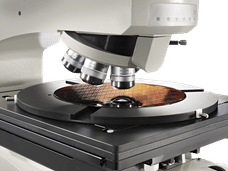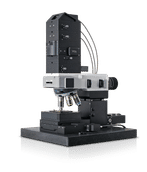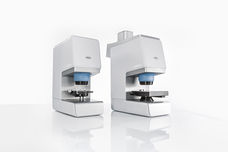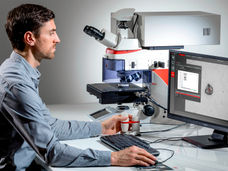World's first confocal light microscope to study chiral molecules
This discovery is a major breakthrough that will allow researchers to analyse previously unexplored parts of biology and chemistry
Scientists from Durham University’s Chemistry Department have developed the world’s first laser scanning confocal microscope that can harness Circularly Polarised Light (CPL) to differentiate left and right-handed molecules, also known as chiral molecules.

pixabay.com
The microscope, known as CPL Laser Scanning Confocal Microscope (CPL-LSCM), is the first of its kind that can detect and track luminescent chiral molecules in cells and has extensive potential to be used by the imaging and biomedical research community globally.
CPL Laser Scanning Confocal Microscope can track emissive chiral molecules within live cells and distinguish left-handed molecules from right-handed molecules that can emit bright light, which was not possible before.
Luminescent chiral molecules encode a unique optical fingerprint when emitting Circularly Polarised Light that contains information about the molecular environment, conformation, and binding state. For the first time ever, this information along with previously uncharted parts of biology and chemistry can be accessed and analysed using the novel microscope.
The researchers also demonstrated that CPL-active probes can be activated using biologically favoured low energy two-photon excitation that allows imaging of living tissues up to one millimetre in thickness, with complete CPL spectrum recovery.
Tracking of chiral molecules within live cells permits researchers to study the fundamental interactions between cell, organelles, drugs or introduced chiral molecular probes. This can be a great leap forward in many aspects of chemistry, biology and material science.
Full result of the study has been published in the journal Nature Communications.
Dr Robert Pal, lead researcher of the study, said: “This is a significant milestone both in optical microscopy and circularly polarised luminescence research, and we hope that it will be adapted and used by many researchers world-wide to venture into the uncharted and study fundamental biological processes in a new ‘chiral’ light.”
CPL Laser Scanning Confocal Microscope can simultaneously measure left and right-handed CPL, signifying a step forward in technological capability that opens up new opportunities to study chiral molecular interactions.
Original publication
Other news from the department science
These products might interest you

DM8000 M & DM12000 M by Leica
See More, Detect Faster
High-throughput Inspection Systems

alpha300 R by WITec
3D Raman microscopes with unequalled speed, sensitivity and resolution
Visualize and characterize every chemical detail

LUMOS II by Bruker
FT-IR microscopy in the fast lane - the LUMOS II
One infrared microscope for all

ZEISS ZEN core by Carl Zeiss
ZEISS ZEN core - Your Software suite for connected microscopy in laboratory and production
The comprehensive solution for imaging, segmentation, data storage and analysis

HYPERION II by Bruker
FT-IR and IR laser imaging (QCL) microscope for research and development
Analyze macroscopic samples with microscopic resolution (5 µm) in seconds

Get the chemical industry in your inbox
By submitting this form you agree that LUMITOS AG will send you the newsletter(s) selected above by email. Your data will not be passed on to third parties. Your data will be stored and processed in accordance with our data protection regulations. LUMITOS may contact you by email for the purpose of advertising or market and opinion surveys. You can revoke your consent at any time without giving reasons to LUMITOS AG, Ernst-Augustin-Str. 2, 12489 Berlin, Germany or by e-mail at revoke@lumitos.com with effect for the future. In addition, each email contains a link to unsubscribe from the corresponding newsletter.


























































